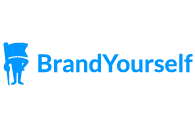
Personal Brand Strategy – Brand Yourself Using Multi Channels
We often discuss Facebook, LinkedIn, Twitter, your resume, networking, etc. one at a time or maybe in pairs, but seldom is the whole picture described. Your brand is the sum of the all parts of the communication and information channels you use, and sometimes by the ones you do not use. Therefore it is essential to have a strategy for how to communicate in the different channels over time. So let’s look at a checklist for how to work with such a strategy. I assume that you have already defined your brand before starting with this strategy.
The desired outcome
This is the foundation of every strategy. If you have a clear sense of what you are and what you want to achieve with your communication you are much more likely to get the desired result. I would like you to take this to the next level and define which outcomes you will get if you get the result you want. By outcome I am referring to the consequences and changes that the result will ignite.
Example: If the goal is “to be known as an expert in automotive gear box development,” the desired outcome could be “work 20h/week as a consultant with the same salary as before”.
Who would you like to reach and where are they?
Every person you interact with has different capabilities to help you achieve your desired outcome. Some have zero possibility and some have 100 %. The question you should ask yourself is which person has the best ability to get you to where you want to be. If you do not know who it is, then ask yourself how to find that out.
The next step is to identify where these people are active. Which channels do they use/read/visit?
How do they act – how do you act in each channel?
Once you have identified the key people for your communication (the Key Opinion Leaders) and identified the channels they are using, start analyzing who they interact with and in what way are they communicating. Adjust your message and communication to the recipient but don’t lose yourself by changing who you are. Your message and your style should be adjusted to 1) the person(s) you are communicating with, and 2) the appropriate way to communicate in each channel.
Imagine yourself talking to an important person on Twitter, using 140 characters with a link to more information in the end and maybe a hash tag for categorization. Now imagine interacting in the exact same way when meeting someone over lunch. That person would probably wonder what the hell you are talking about.
Do you work systematically with a publishing calendar?
Being consistent and having a clear, focused theme across the different channels will make your brand stand out. Also, having common elements that identify you will give the recipient of your message a solid image of who you are. To maintain a high level of consistency and quality of the communication, I would recommend you create a calendar where you plan your activities in the near future. Each entry should incluce
- Channel (Twitter, Facebook, LinkedIn, blog, newsletter, networking events, phone call, seminar, etc.)
- Target audience (specific person or group of people – communicate to attract the right people)
- Topic (make sure your topic or subject for discussion is something you can stand up for and that you have done your homework in the area)
- Desired outcome (when publishing or leaving the networking event – what is the result and outcome that you desire?)
You want to reach me – why and what do you want me to do?
Last, always keep in mind that we all play the game of givers gain, and if I feel that I can trust you and that you communicate confidence, you have to let me know how I can help you take the next step to achieving your goals. Be clear to the recipient what you want them to do and how they can do it, that way you are a lot closer to actually getting it.
Ola Rynge is an entrepreneur with a passion for the personal development side of personal branding (covered in this blog) as well as the application of personal branding and social media for entrepreneurs and small businesses (covered in The Rynge Blog).
His company, The Rynge Group specializes in market oriented small business and idea development, including social media strategies and implementations.

ery good, indeed! This concept actually has many similarities to my own new business idea: http://www.NetZpider.net.
I use target audiences (2.) to create different brands and blogs. A topic (3.) can be a slogan, a message (or maybe a question?) designed for this target group. The message is spread using many different channels (1.) both online and offline. I would certainly add PR as an important channel. And finally, the desired outcome (4.) will of course be to start conversations about my brands, to help my customers in their private (love-)life (yes, I sell T-shirts etc with conversation-starting messages to sngles), and finally to earn money.
The calendar stuff is something new. Haven't thought of that. But you are right – timing is also very important 🙂
Very good, indeed! This concept actually has many similarities to my own new business idea: http://www.NetZpider.net.
I use target audiences (2.) to create different brands and blogs. A topic (3.) can be a slogan, a message (or maybe a question?) designed for this target group. The message is spread using many different channels (1.) both online and offline. I would certainly add PR as an important channel. And finally, the desired outcome (4.) will of course be to start conversations about my brands, to help my customers in their private (love-)life (yes, I sell T-shirts etc with conversation-starting messages to singles), and finally to earn money.
The calendar stuff is something new. Haven't thought of that. But you are right – timing is also very important 🙂